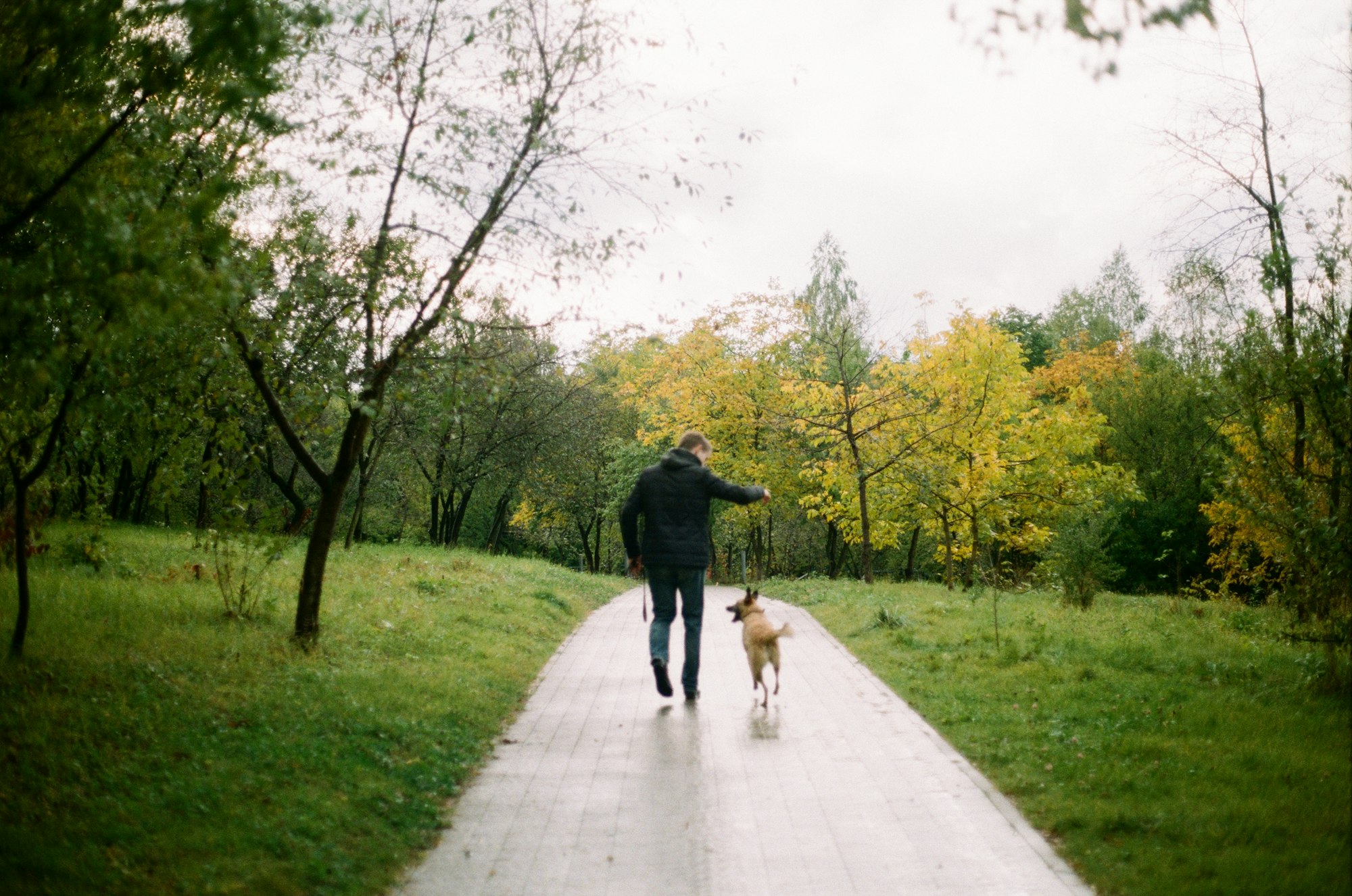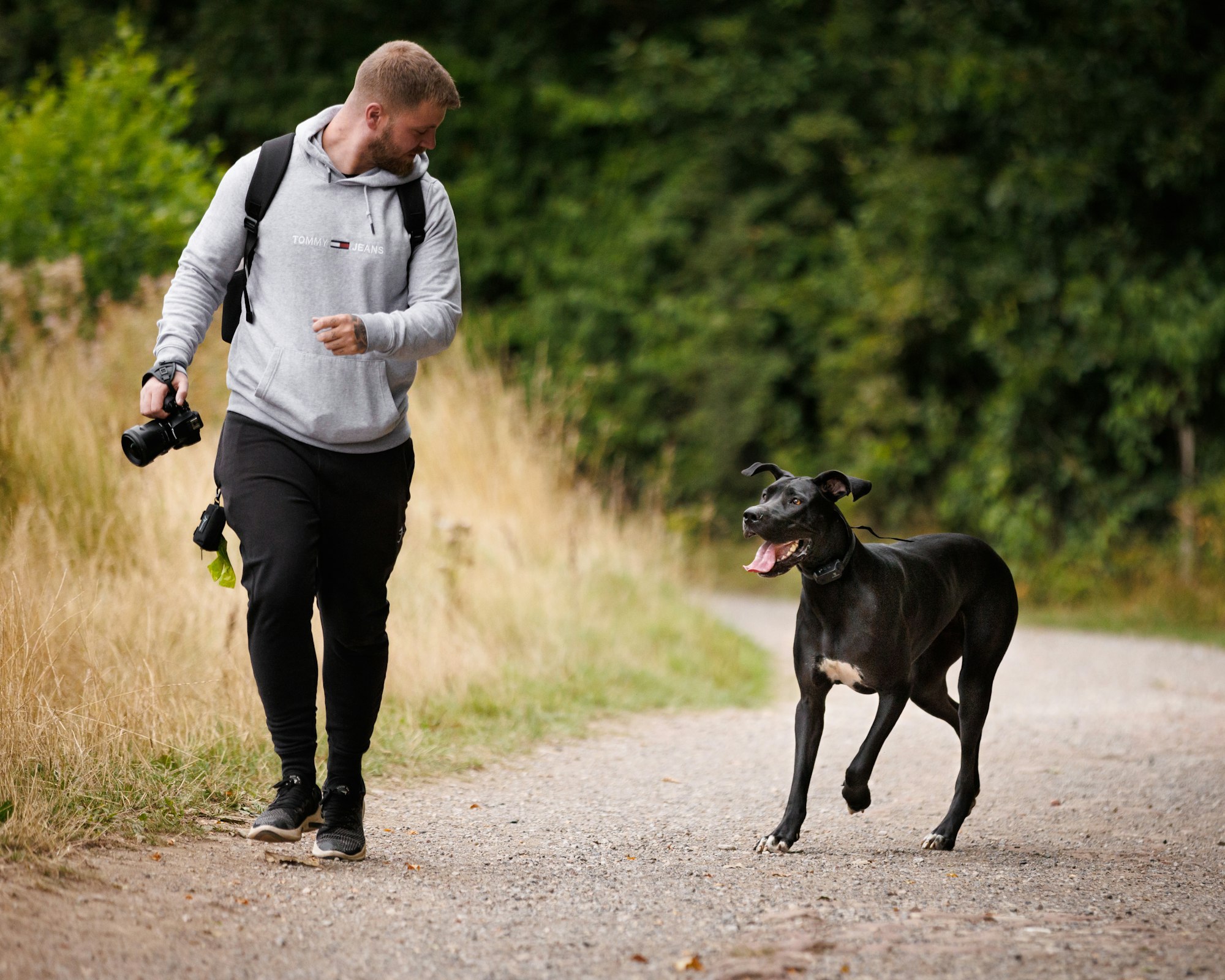As the calendar flips to a new year, many individuals set intentions to enhance their fitness levels, and pet owners have the unique opportunity to incorporate their dogs into these healthful resolutions. Engaging in physical activities with a dog not only promotes the owner's well-being but also caters to the pet's exercise needs, forging a stronger bond between them. This synergistic approach benefits both the dog and the owner, establishing a routine that is mutually beneficial and enjoyable.
Selecting the appropriate activities to achieve fitness goals while considering the canine companion's capabilities is essential. Dogs, much like humans, require tailored exercises that suit their age, breed, and general health. Owners must consider these factors to ensure that they provide their pets with a safe and effective workout. This focus on compatibility maximizes the benefits and safety of shared fitness routines.
Outlined in the following are five practical ways to involve a canine friend in new year fitness endeavors. These strategies are designed to be adaptable, catering to a wide range of fitness levels and interests, while promoting health and wellness for both the pet and its owner. By consistently incorporating these exercises into their daily routine, pet owners can set a positive tone for the year, fostering a lifestyle of activity and companionship.

Setting Realistic Fitness Goals with Your Dog
Embarking on New Year fitness goals with your dog provides not only an opportunity for improved health but also for strengthening the bond between you and your pet. It's essential to establish objectives that are achievable and tailored to both your needs and the capabilities of your dog.
Understanding SMART Fitness Goals
SMART is an acronym that stands for Specific, Measurable, Attainable, Relevant, and Time-bound, forming the basis for effective goal setting. When it comes to fitness goals with your dog, here’s how to apply the SMART criteria:
- Specific: Define what activities you and your dog will engage in, such as walking for 30 minutes or playing fetch for 20 minutes daily.
- Measurable: Set benchmarks, like the number of walks per week or distance covered, to track improvement.
- Attainable: Make sure the goals take into account your fitness level and your dog’s health and breed-specific exercise needs.
- Relevant: Choose activities that are fun and beneficial for both you and your dog, which will increase the likelihood of maintaining motivation.
- Time-bound: Establish a timeline, like a weekly schedule, to create consistency and structure for your fitness plan.
By adhering to these principles, you and your dog’s fitness resolutions are more likely to succeed.
Charting Progress and Celebrating Milestones
Maintaining a progress log can be a rewarding way to visualize the journey and keep the motivation high. Consider these methods for charting progress with your dog:
| Activity | Baseline | Goal | Progress | Milestone Celebration |
|---|---|---|---|---|
| Daily Walking | 10 min | 30 min | +5 min/week | New route or toy reward |
| Weekly Play Sessions | 1 session | 3 | +1 session | Special playtime |
| Distance Covered (Monthly) | 5 km | 15 km | +2.5 km | Picnic in the park |
Celebrating milestones is as important as setting them. Small rewards, like a new play toy or an extra play session when a goal is met, reinforce positive behavior and provide a sense of accomplishment. It’s pivotal to recognize the strides made in your collective fitness journey, which encourages adherence to the set goals and adds enjoyment to the routine.
Incorporating Fun and Varied Activities
Variety is key in maintaining both your and your pup's enthusiasm for fitness activities. By mixing in different forms of play and exploration, exercise feels less like a chore and more like a bonding experience.
Interactive Games and Play
Interactive games engage a dog's mind and body, making fitness fun and stimulating. For example:
- Fetch Variations: Play with frisbees or balls that have unique shapes and erratic bounces to keep your pup guessing and active.
- Agility Work: Set up a simple agility course using cones and jump bars to provide a physical challenge.
Exploring New Trails and Environments
Dogs thrive on novel scents and sights, so varying their exercise through new environments is beneficial.
- Trail Runs: Identify dog-friendly trails where you and your pup can experience a change of scenery during runs or hikes.
- Group Hikes: Join a dog-friendly hiking group to combine socialization with exercise and explore different trails together.

The Role of Nutrition and Health Check-Ups
A well-balanced diet and regular health assessments are crucial to a dog's fitness and well-being, especially when beginning a new exercise regimen.
Diet Considerations for Active Dogs
Active dogs have specific dietary needs to support their increased energy requirements. The diet should be high in proteins and fats to provide sustained energy. Owners should consider the following:
- High-Quality Protein: Essential for muscle repair and growth. Sources include lean meats, eggs, and fish.
- Healthy Fats: Provide concentrated energy; look for foods with omega-3 and omega-6 fatty acids.
- Carbohydrates: Should come from whole grains and vegetables for easy digestion and nutrient absorption.
- Hydration: Fresh water availability is essential, especially during and after workouts to prevent dehydration.
Weight management is a key component, as excess weight can impair a dog's performance and overall health. Feeding schedules and portion sizes should be adjusted to the dog's activity level to avoid weight gain.
Regular Veterinary Consultations
Regular check-ups by a veterinarian can pre-emptively address health issues and are vital in maintaining a dog’s health:
- Health Check-Ups:
- A complete clinical examination ensures the dog is fit for increased activity.
- These appointments allow the veterinarian to monitor weight changes and adjust diet plans accordingly.
- Consultation Benefits:
- Provides personalized advice based on the dog’s health status and fitness goals.
- Can offer recommendations on vaccinations and parasite control, which are important as dogs spend more time outdoors and in contact with other animals.
During and after a pandemic, these visits might also cover new health protocols and provide an opportunity for owners (clients) to discuss any observed behavioral changes that may indicate stress or discomfort in their dogs. Such insights are valuable in tailoring both diet and exercise plans.
Techniques for Maintaining Consistency and Motivation
Successfully integrating a new fitness routine with your dog into your lifestyle requires consistent effort and a motivational strategy. Employing a well-structured daily exercise routine alongside leveraging technology and community support can greatly enhance both your and your pet's commitment to a healthier lifestyle.
Creating a Daily Exercise Routine
Establishing a daily exercise routine is critical for maintaining consistency. Set SMART goals (Specific, Measurable, Achievable, Relevant, Time-bound) to outline clear fitness objectives for you and your pup. A morning jog, an agility workout in a local park, or a brisk evening walk can be part of your routine. Schedule these activities at the same time each day to build a habit. Consistent routines foster accountability and can transform a new activity into a regular part of your lifestyle.
- Morning Exercise: A 30-minute jog at 7 AM.
- Midday Activity: Fetch or frisbee for 20 minutes during lunch.
- Evening Walk: A 45-minute walk around the neighborhood after dinner.
Leveraging Technology and Community Support
Utilizing technology such as fitness trackers and community support enhances motivation. Fitness trackers for humans and devices like the Fi collar for dogs can monitor activity levels, providing instant feedback and a sense of progress. These devices often have community features that allow you to connect with friends or neighbors, transforming solitary workouts into a social experience.
- Track Progress: Use fitness trackers to set daily step goals.
- Join Classes: Enroll in local dog-friendly fitness classes.
- Community Engagement: Join an online or neighborhood fitness group for regular meet-ups.
Supportive communities offer encouragement and can hold one another accountable, which is important for a lasting lifestyle change. Engaging in activities together, sharing results, and celebrating achievements with peers can sustain motivation levels and bolster the commitment to a healthier lifestyle for both individuals and their canine companions.
Addressing Canine Specific Fitness Needs
When engaging dogs in fitness activities for the New Year, it's imperative to consider their unique physical requirements and limitations. Each breed and size of dog has different stamina levels and health concerns, thus, tailoring exercise is key to prevent injury and provide the most benefit.
Adapting Workouts for Different Dog Breeds and Sizes
Small Breeds: Smaller dogs often have high energy levels but may be more prone to injuries due to their delicate frames. Activities like short, brisk walks or indoor obstacle courses are recommended to accommodate their size.
- Medium Breeds: Moderate hiking and fetch are suited for these dogs, providing physical exercise while allowing for mental stimulation.
- Large Breeds: They benefit from longer walks and structured exercise routines, considering their higher endurance levels.
Key Considerations:
- Cognitive Function: Incorporate commands to keep their mind engaged.
- Mobility: Monitor their movements; some breeds have specific limitations.
- Medical Condition: Be mindful of issues like arthritis or heart disease affecting exercise capacity.
Recognizing the Signs of Overexertion and Pain
Owners should watch for specific indicators that their dog is in pain or experiencing overexertion during workouts.
Signs of Pain:
- Vocalizing: Whining or growling can be a sign of discomfort.
- Limping: A clear indication that something is wrong.
- Refusal to exercise: If they're not interested in activities they usually enjoy.
Signs of Overexertion:
- Excessive panting or drooling: Indicative of overexertion, especially in cooler weather.
- Lagging behind: Might suggest the workout is too intense for their current fitness level.
- Changes in Activity: Sudden disinterest can indicate that the exercise is too demanding or painful.
It is crucial for owners to stop exercise immediately on observing such signs and, if necessary, consult a veterinarian.

